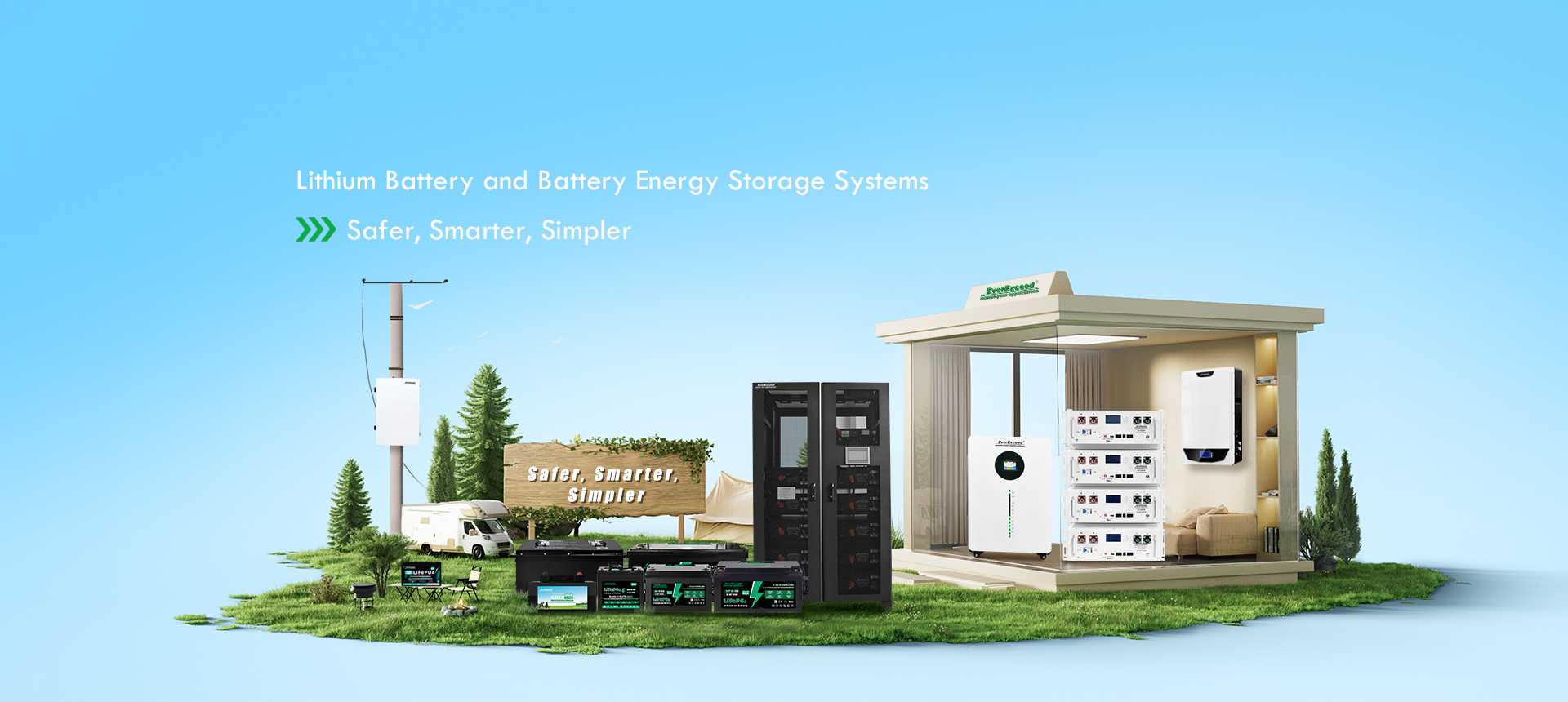1. Identifikasi skenario aplikasi
Tujuan dari
baterai litium
secara langsung mempengaruhi pemilihan parameter:
-
Perangkat portabel (ponsel, drone, kamera): prioritaskan kepadatan energi tinggi (seperti baterai lithium terner) dan ringan.
-
Kendaraan listrik/perkakas listrik: memerlukan tingkat pengosongan daya yang tinggi (C-rate) dan siklus hidup yang panjang (seperti baterai litium besi fosfat).
-
Sistem penyimpanan energi (energi surya, daya cadangan rumah): fokus pada kapasitas tinggi, umur panjang, dan keamanan (litium besi fosfat lebih cocok).
-
Proyek DIY/peralatan khusus: perlu mempertimbangkan ukuran, kompatibilitas tegangan, dan persyaratan penyesuaian.

2. Analisis parameter utama
Tegangan (V)
-
Tegangan nominal satu baterai litium biasanya 3,7 V (litium terner) atau 3,2 V (litium besi fosfat).
-
Pilih jumlah sel seri sesuai dengan kebutuhan perangkat (seperti 48V dan 72V umumnya digunakan pada kendaraan listrik).
Kapasitas (Ah) dan energi (Wh)
-
Kapasitas (Ah): menentukan masa pakai baterai. Misalnya, baterai 10Ah dapat digunakan selama 2 jam dengan debit 5A.
-
Energi (Wh) = Tegangan × Kapasitas: secara langsung mencerminkan total kapasitas penyimpanan energi. Saat membandingkan berbagai baterai, Wh lebih akurat.
Tingkat pembuangan (C-rate)
-
Menunjukkan kapasitas pengosongan daya baterai. Misalnya, 1C berarti daya baterai habis sepenuhnya dalam waktu 1 jam, dan 10C berarti daya baterai habis sepenuhnya dalam waktu 6 menit.
-
Peralatan berdaya tinggi (seperti bor listrik dan drone) memerlukan baterai dengan tingkat pengosongan daya tinggi (seperti 20C atau lebih).
Siklus hidup
-
Baterai litium terner: sekitar 500-1000 siklus (kapasitas turun hingga 80%).
-
Baterai litium besi fosfat
: 2000-5000 siklus, cocok untuk skenario penggunaan jangka panjang.
3. Pemilihan jenis baterai
-
Baterai litium terner (NMC/NCA)
Hai
Keunggulan: kepadatan energi tinggi (200-300Wh/kg), kinerja suhu rendah yang baik (-20℃).
Hai
Kekurangan: keamanan rendah (diperlukan perlindungan sirkuit), umur pendek.
Hai
Berlaku: elektronik konsumen, kendaraan listrik, drone.
-
Baterai litium besi fosfat (LiFePO₄)
o Keunggulan: keamanan tinggi (tahan suhu tinggi, tidak mudah terbakar), umur pakai panjang, dan biaya berangsur-angsur menurun.
o Kekurangan: kepadatan energi rendah (90-160Wh/kg), kinerja suhu rendah yang buruk.
o Aplikasi: sistem penyimpanan energi, bus listrik, kendaraan listrik kecepatan rendah.
-
Jenis lainnya: litium titanat (umur sangat panjang), litium kobalt oksida (energi tinggi, digunakan dalam telepon seluler), dll., dipilih sesuai kebutuhan khusus.
4. Pertimbangan keselamatan
Sirkuit perlindungan: Pastikan baterai memiliki perlindungan terhadap pengisian berlebih, pengosongan daya berlebih, dan hubungan arus pendek.
Manajemen termal: Paket baterai berkapasitas besar perlu dilengkapi dengan desain pembuangan panas (seperti paket baterai kendaraan listrik).
Standar sertifikasi: Pilih produk yang disertifikasi oleh UL, CE, UN38.3, dll. untuk menghindari baterai berkualitas rendah.
5. Keseimbangan antara merek dan anggaran
-
Merek terkenal: seperti CATL, BYD, Panasonic, LG Chem, dll., dengan kualitas terjamin.
-
Efektivitas biaya:
o Baterai berharga murah mungkin menggunakan sel bekas atau BMS (sistem manajemen baterai) yang kualitasnya rendah.
o Litium besi fosfat memiliki biaya awal yang tinggi, tetapi lebih hemat biaya dalam jangka panjang (siklus hidup panjang).
6. Faktor fisik dan lingkungan
-
Ukuran dan berat: Pastikan baterai dapat dipasang di perangkat (misalnya drone sensitif terhadap berat).
-
Kisaran suhu:
o Lingkungan suhu tinggi: Pilih sel yang tahan suhu tinggi (misalnya LiFePO₄).
o Lingkungan suhu rendah: Baterai litium terner berkinerja lebih baik, atau tambahkan sistem pemanas.
7. Peraturan dan perlindungan lingkungan
-
Pembatasan transportasi: Baterai berkapasitas besar mungkin dikenakan pembatasan transportasi udara (misalnya lebih dari 100Wh perlu dilaporkan).
-
Daur ulang: Pilih merek yang mendukung daur ulang untuk menghindari pencemaran lingkungan.
Ringkasan langkah-langkah
1. Tujuan yang jelas: Tentukan jenis perangkat dan persyaratan inti (misalnya daya tahan, daya, masa pakai).
2. Hitung kebutuhan: Perkirakan tegangan dan kapasitas yang dibutuhkan (Wh) berdasarkan daya perangkat dan waktu pengoperasian.
3. Pilih jenis: Litium terner (kepadatan energi tinggi) vs. litium besi fosfat (keamanan tinggi).
4. Verifikasi keselamatan: Periksa fungsi perlindungan, sertifikasi, dan ulasan pengguna.
5. Pencocokan anggaran: Pilih model terbaik dalam kisaran merek dan kualitas yang dapat diterima.
6. Adaptasi instalasi: Konfirmasikan ukuran, berat, dan kemampuan beradaptasi lingkungan.
Contoh skenario:
-
Modifikasi kendaraan listrik: Pilih baterai lithium besi fosfat 72V 20Ah (siklus umur panjang dan keamanan tinggi).
-
Catu daya luar ruangan: Pilih baterai LiFePO₄ 12V 100Ah (mendukung 2000 siklus, cocok untuk penyimpanan energi jangka panjang).
-
Drone: Pilih baterai lithium terner berkecepatan tinggi (seperti 4S 1500mAh 75C).
Melalui langkah-langkah di atas, Anda dapat secara sistematis menyaring solusi baterai lithium yang paling sesuai dengan kebutuhan Anda.

